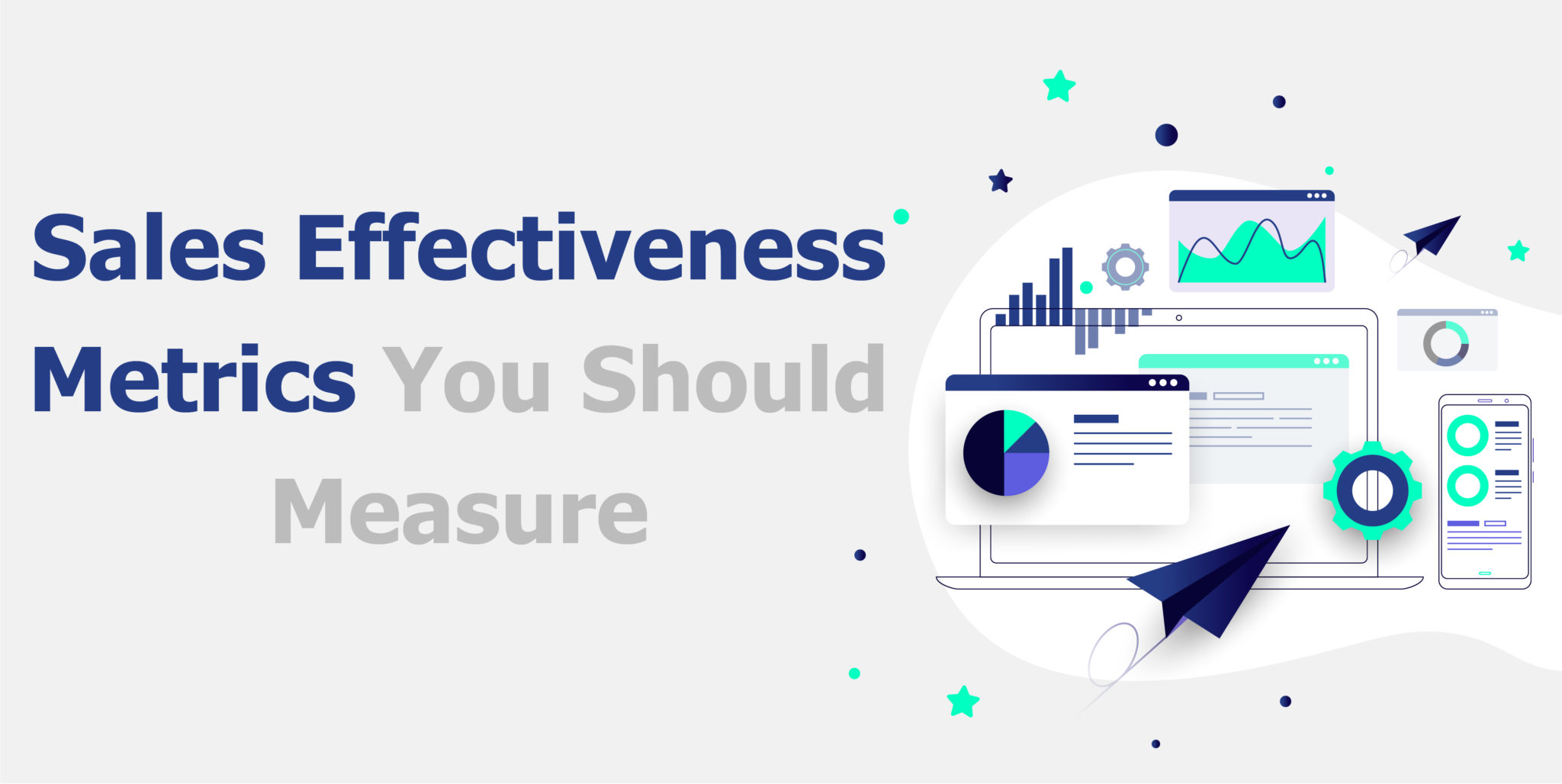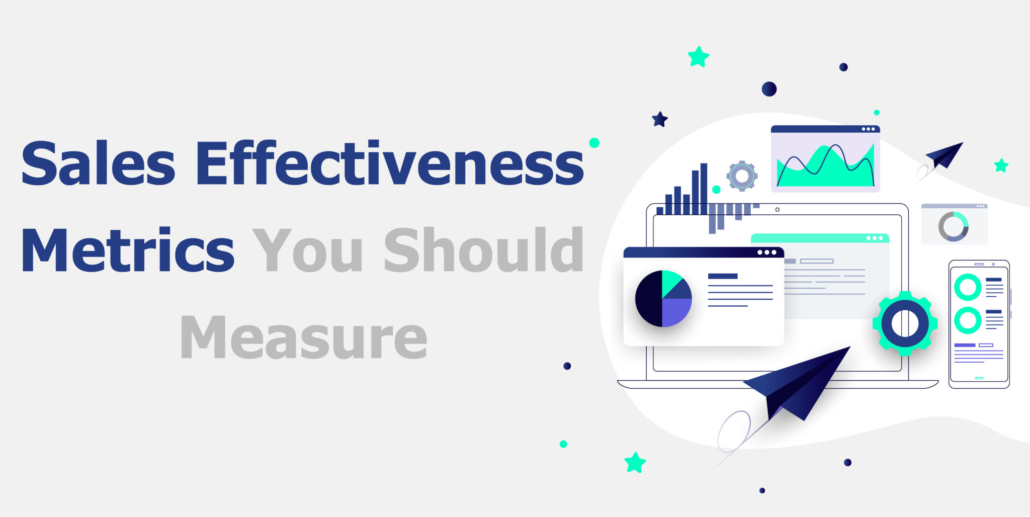Sales is equal parts art and science. The art portion requires you to bring emotion and people skills into every interaction, while the science aspect requires you to leverage logic and processes to move your prospects through the funnel.

Having the right balance, of course, results in leads that turn into opportunities that turn into deals. Granted, you can’t win them all, but when you emphasize too much art or too much science, you may miss leads that eventually would have turned into closed deals.
Using the right sales effectiveness metrics can help you monitor this progress and see where your greatest challenges are so that, in turn, you can bring the right blend of art and science to your interactions.
Here are six of the most important sales effectiveness metrics you should be monitoring:

1. Percent of Sales Team Hitting Quota
Harvard Business Review notes that an average of 60% of sales people hit 100% of their quota last year, though this can vary by sales organization. Regardless of what your sales team’s percentage is, there are a few things you can tell from it:
First, if 90% or more of your team is hitting quota, then you may be losing money. In this case, the quota is apparently easy to hit. Some of your reps may have barely cleared the bar, while others may have hit it quickly. For those that did manage to make quota with no issue, they could have lessened their workload to take it easy until the next round begins, which means they’re not working as hard to close deals. That’s a problem.
However, if only a small percentage of your team is hitting the quota, it could be damaging to morale. They feel the objectives are impossible to reach, no matter how hard they try. In this case, they may give up on deals too easily or give up on the organisation altogether, leaving you with an empty seat to fill.
It’s essential to monitor your sales team’s performance as a whole to ensure that quotas remain at a competitive yet fair level that boosts morale but also encourages employees to do their best throughout the sales period.
2. Win/Lose Ratio
No matter how great of a product you have or how effective your sales team is, they’re not going to close every deal in the pipeline. But if they’re winning bigger and losing smaller over time, they’re on the right track.
Knowing your win/lose ratio can help you determine where improvements are being made over time, or if you’re moving in the wrong direction. As a team member’s experience grows, so should their win ratio (ideally). But if lose rates start to increase, it could indicate encroaching competition, ineffective team members, or a host of other issues that should be addressed.
3. Deals by Lead Source
Leads come from a variety of sources. Some of them turn into deals, while others drop out of your pipeline. In either case, it’s important for both sales and marketing to know which lead sources are turning out the most deals.
Lead sources with a proven history of excellence can help you improve sales forecasting, marketing budget allocation, and even streamline your sales process.
4. Percentage of Qualified Leads
Not all leads you receive are qualified, and it’s essential for marketing and sales teams alike to know the difference. Sales teams that receive qualified leads are better positioned to sell to them, but if only a small percentage of leads are qualified, sales teams will struggle to close deals.
5. Revenue from Existing Customers vs New Business
If you play your cards right, you won’t have to spend all your time chasing new business. Not only is it 5-7 times more expensive to market to a new customer, but it’s also more time-draining trying to start the wheel over each time.
Sales teams should pay attention to how much of their revenue is coming from existing customers vs. new business. If most of your revenue is coming from new customers, you might need to examine your retention practices to see why customers are leaving and how you can fill the gaps.
6. Your Most Important Customers
The Pareto Principle says that roughly 80% of your revenue will come from 20% of your customers. The actual split might be more like 70/30 or 85/15, depending on your company, but the fact remains that a select few will contribute more to your bottom line than most others.
It’s essential to identify who those select few are, what makes them tick, how much they’re spending, and what they’re spending money on so you can double down on your sales and marketing efforts, or at the very least, find a duplicate audience so you pump up your sales volume.
How LeadSquared Can Help You Leverage Sales Effectiveness Metrics
Every sales organisation has hundreds of metrics they could measure, but which ones are really showing you the effectiveness of your team players? And better yet, how can you easily capture the data that will give you the metrics you really care about?
LeadSquared is designed to monitor all of the above metrics (and more!) and turn them into usable insights for your company. Our comprehensive suite of features for lead gen and sales teams make it easy to track the entire sales journey from the moment it starts.
Try LeadSquared free for 15 days — no credit card required — and start putting your sales effectiveness metrics to work for you!










![[Webinar] Sales Automation 101: Unclog your Sales Pipeline](https://www.leadsquared.com/wp-content/uploads/2024/04/automation-webianr-popup.gif)
